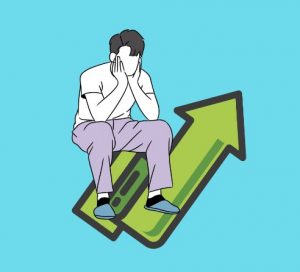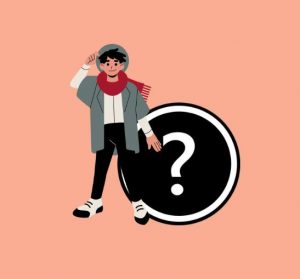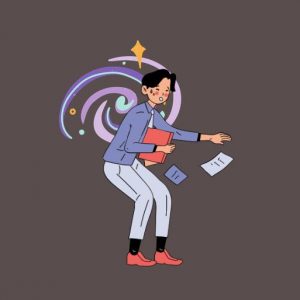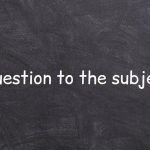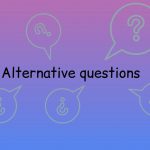What Does First Conditional Mean?
When we use First Conditional we are talking about the present or the future. By using First Conditional, we mean a possible condition in the part with if and a likely outcome in the main part with the result.
The result we mean is based on facts or patterns. These are not our inventions or fantasies. The result contains a high probability that this will happen. There are certain reasons for this.
If you go outside without an umbrella, you will get wet!
In order to better understand First Conditional, let’s look at the example in detail:
Mom tells John:
John, if you clean your room, I’ll buy you ice cream.
This is how we most often use conditional sentences every day.
if you clean your room this is the condition. That’s what Mom told John to do.
I’ll buy you ice cream. This is the result. This is what happens if John cleans the room.
In such sentences, it is very important to understand what the condition is.
Because we could write this sentence differently:
Mom says to John:
After you clean your room, I’ll buy you ice cream.
This sentence is similar in meaning to the previous example, but this sentence is not a conditional sentence.
Because in this example, Mom is just giving the news to John that she will buy him ice cream after John cleans his room.
When we use the first conditional, we emphasize that one event will happen ONLY IF the condition is met. And this means that if the condition is not met, the result will not happen.
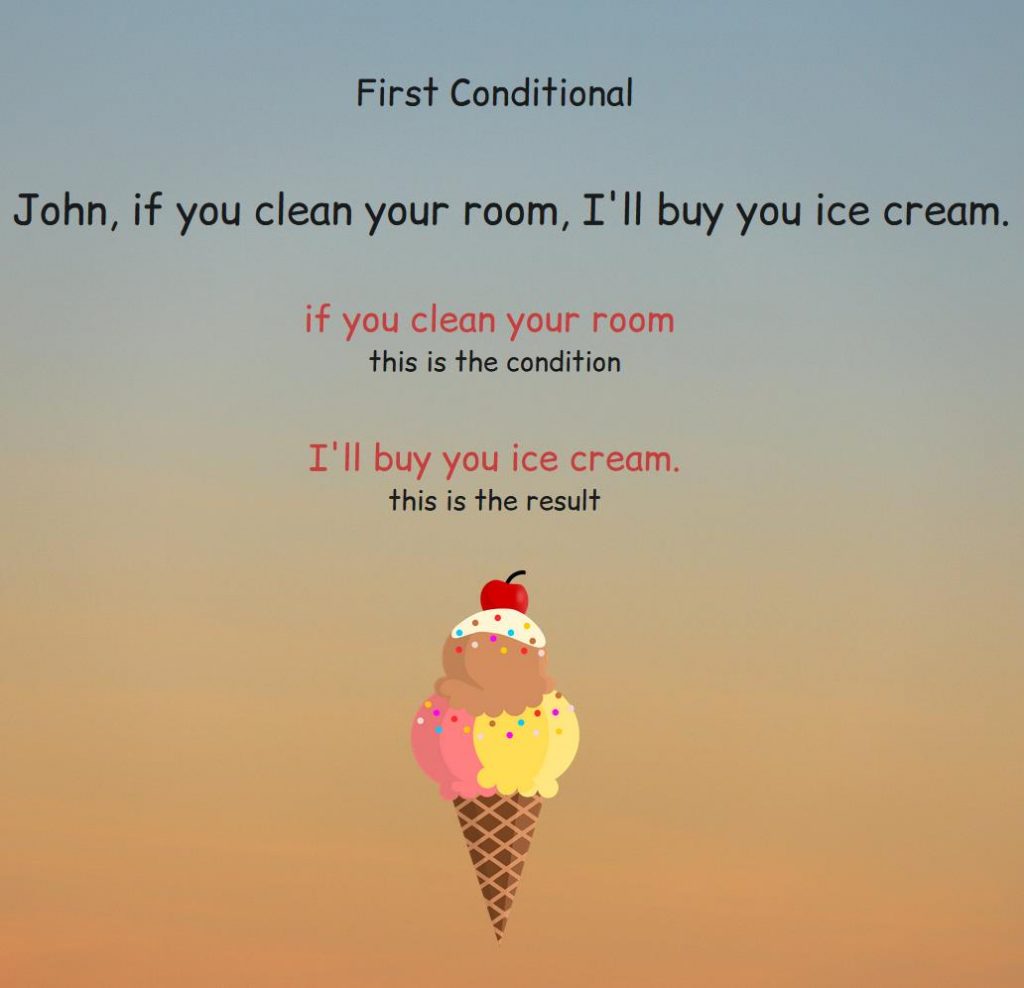
First Conditional Formula
The First Conditional formula is very simple.
First Conditional consists of two parts in which we use two different tenses: Present Simple and Future Simple. This is the essence of First Conditional. We show the relationship of something in the present with a result in the future.
We use the Present Simple in the “if part”, in the part where we describe the condition. We use the Future Simple in the main part. In the part with the result.
Formula:
{If + Present Simple} comma {Future Simple}
If I crash the car, my father will kill me!

Modal Verbs Instead Of Future Simple In First Conditional
We usually use Future Simple in the main part where we indicate the result. But we can use modal verbs in First Conditional. If we replace Future Simple with a modal verb, we emphasize our confidence in the result.
Take a look at examples:
If I study well, I will find a decent job.
If I study well, I can find a decent job.
If I study well, I may find a decent job.
We often use modal verbs instead of will to change the degree of confidence in what we are saying.
Also, with the help of a modal verb in the main part of First Conditional, we can give permission or recommendation.
If your father comes back earlier, you can go for a walk.
If you behave yourself, I might buy you a toy.
If there is sunshine you could go to the beach.
Do not forget that after a modal verb we use a verb without the particle to or without the ending – ing.
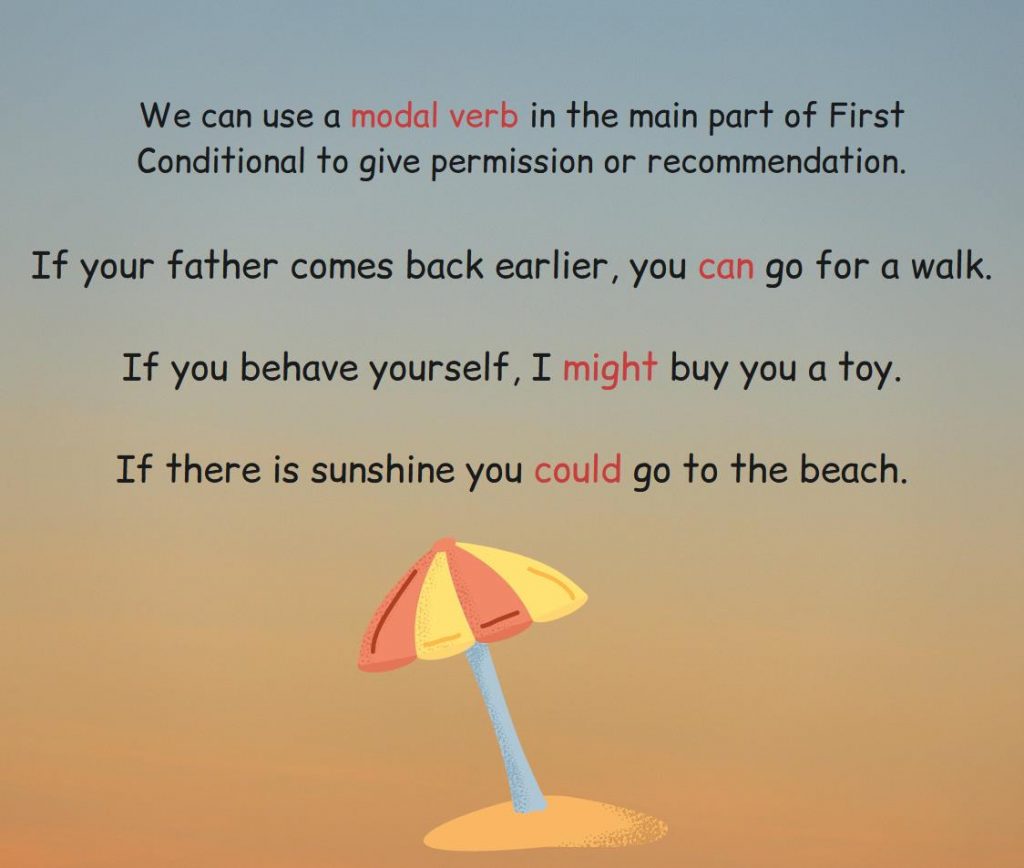
First Conditional: The logic Of The Future
In First Conditional, we use the Present Simple and Future Simple. The Present Simple is in the part where we describe the condition:
If it rains we will stay at home.
But there is one nuance here that you should pay attention to.
Very often when using First Conditional, we mean that both the condition and the action will occur in the future.
John, if you buy a car, Jessica will pay attention to you.
In this example, it is quite obvious that when we say “Jessica will pay attention to you” we mean that it will happen in the future.
But look at the nuance:
When we say the first part “John, if you buy a car” we are also talking about something that has not happened yet. So we mean that if John (will) buys a car in the future, Jessica will pay attention to him in the future.
Why then do we say the first if part using the Present Simple? This is one of the important rules of the English language that must never be forgotten:
We never use the future tenses after the word if, even if we mean that what we are talking about will happen in the future.
Therefore, when you use the Present Simple after the word if it does not always mean that you are talking about a condition that should occur in the present.
Using First Conditional
The main use case for First Conditional is when we express the assumption that if one thing happens, then something else will happen. But we are not sure if this is exactly what will happen. We just assume it. Although the likelihood that everything will happen this way is very high.
If you don’t go to school, you will grow up stupid!
I know if we buy you a new phone, you’ll play with it all day.
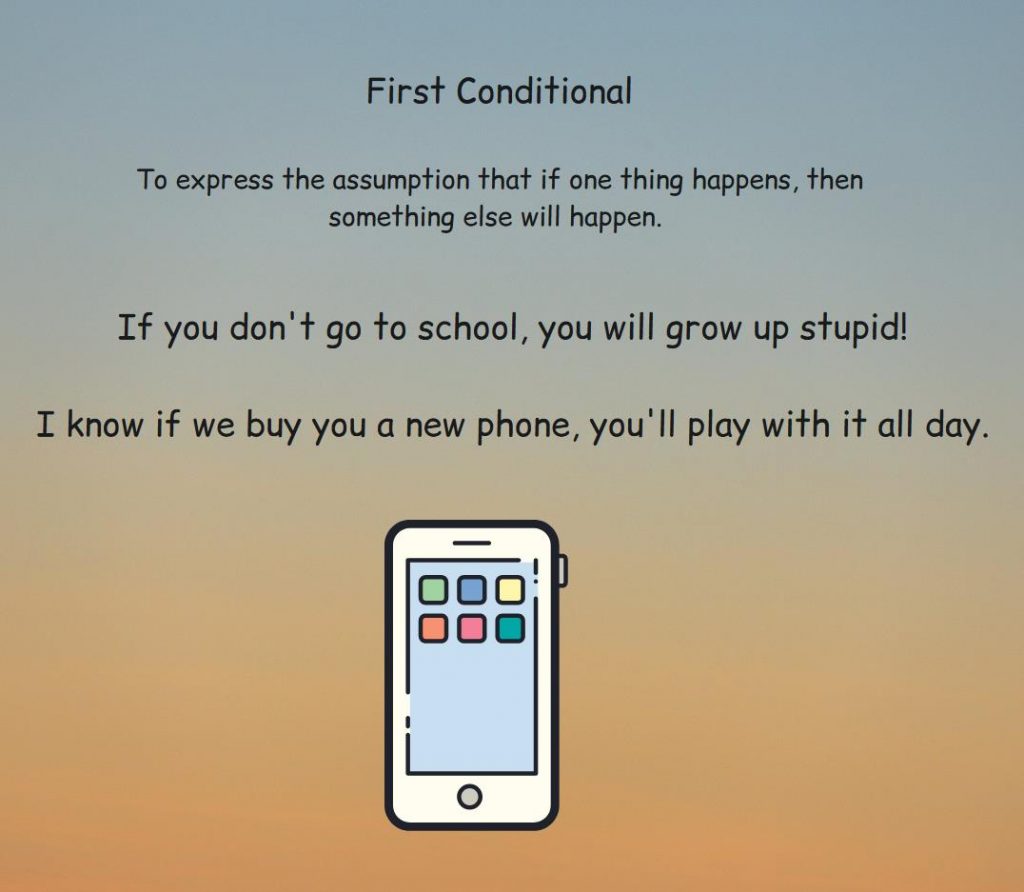
First Conditional For Directions And Instructions
We can use First Conditional to give directions.
Thus, we communicate what must be done in order to obtain a certain result.
If you buy groceries, I’ll make us a delicious dinner.
If you finish the project by lunchtime, I’ll send it to the boss.
We can also use First Conditional for instruction.
If you connect the hose to the valve, then water will flow.
Please note that we also use Zero Conditional for these purposes:
If you buy groceries, I make us a delicious dinner.
If you connect the hose to the valve, water flows.
As you can see, the result and meaning of these instructions do not change regardless of whether we use Zero Conditional or First Conditional.
Using “When” In First Conditional
Can we use the word when instead of if in First Conditional? This is very questionable because we can use when, but then it will stop to be First Conditional.
Let’s take a close look at an example:
If John finishes the book on time, his editor will be pleased.
In this example, we assume that the editor will be pleased if John finishes the book on time. We are quite confident that this will happen, but there is still a certain amount of probability.
Now, let’s replace if with when in the example:
When John finishes the book on time, his editor will be pleased.
This sentence is grammatically correct. But we changed the focus. By using when instead of if we no longer assume, but rather state the fact that when one thing happens, then something else will happen.
There is no mistake in this, but it is important to understand that First Conditional implies a high degree of probability that the result will occur. But First Conditional is not about when we are 100% certain about what we are assuming.
Therefore, we can make a similar sentence with when, but it will not be First Conditional.
Note, however, that we can use when instead of if in Zero Conditional and the sentence does not lose its meaning:
When I eat a lot of sweets, my stomach hurts.
If I eat a lot of sweets, my stomach hurts.
These sentences are equivalent in meaning because we use Zero Conditional when we talk about obvious things with confidence that everything will happen that way. Therefore, in Zero Conditional, it doesn’t matter if we use if or when.
Using Present Continuous In First Conditional
We can replace Present Simple with Present Continuous in First Conditional. We do this in order to emphasize the dynamics of the action, which in our opinion will lead to the result in the second part of First Conditional.
Take a look at an example:
John, if you run so fast you will pass out!
In this sentence, we warn John what will happen to him if he runs so fast. And this sentence is correct in meaning and in form. But if we want to strengthen the emphasis on action in the first part, then we can use Present Continuous:
John, if you are running so fast you will pass out!
Present Continuous focuses on the duration and dynamics of an action. Therefore, we can use these Present Continuous properties in First Conditional.

Imperative Instead Of Will
We can use the imperative instead of the auxiliary verb will.
If John calls, tell him the truth!
If it rains, run home!
This makes First Conditional look a bit like Zero Conditional. But the difference is that when we use such a sentence in First Conditional, we assume that there is a probability that the event will not happen. When we use Zero Conditional there is no such possibility.
This is why the imperative in Zero Conditional is often used to give instructions.
If you press the red button, the monitor turns on.



